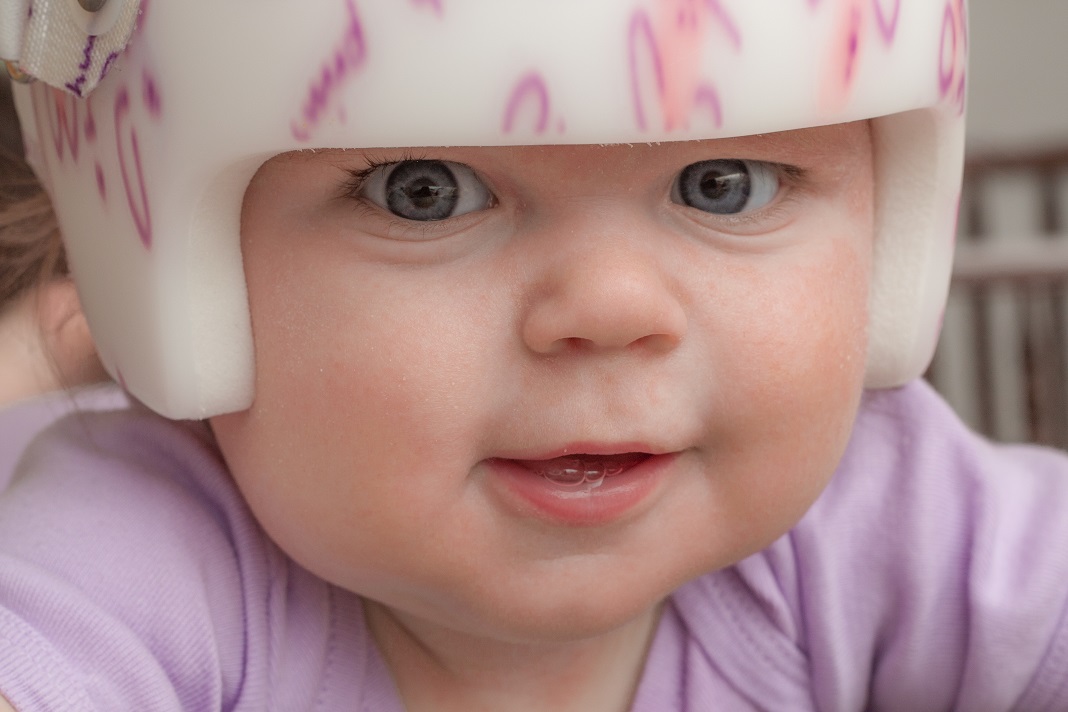Craniofacial is a medical term that refers to the bones of the face and skull. Essentially, craniofacial abnormalities are birth defects of the head or face. The most common of these are the cleft lip or palate. In fact, cleft lip is the fourth most common birth defect in the Unites States. This occurs when a baby’s lip or mouth isn’t completely formed at birth. Unfortunately, it can result in feeding difficulties and other problems for infants.
What are Other Types of Craniofacial Abnormalities Besides Cleft Lip and Palate?
Besides the cleft lip or palate, other types of craniofacial abnormalities are relatively rare. However, these types also cause problems for babies.
They include:
- Jaw, ear, eye, or other facial deformities
- Craniosynostosis (This happens when the bones of the skull join too soon, before the brain is fully formed. This can cause a misshapen head and pressure inside an infant’s skull.)
- Positional Plagiocephaly – a common type of head deformity, this occurs when an infant experiences constant pressure to an area of the skull. Because this area is very pliable in newborns, it can change the shape of the head. Sometimes the child’s head will appear rectangular from above.
- Large birthmarks, including vascular anomalies on the face or other areas
In addition to the child’s appearance, these disorders may also result in developmental or other medical problems.
What Causes Craniofacial Disorders?
Babies’ skulls are made up of plates of bone which are separated by soft areas known as sutures. Craniofacial deformities occur when a baby’s skull or facial bones fuse together abnormally or too early.
When this happens, the brain may not be able to grow properly and become damaged as a result. Consequently, the baby may suffer from neurological problems. Usually, surgery is required to redevelop the shape of the face and skull and create room for the baby’s brain to grow.
There is no single determining factor that leads to this kind of deformity. Instead, there are several including the following:
- Genes – Children may receive certain combination of genes from either one or both parents. Additionally, there can be a change in genes during conception.
- Folic acid deficiency – Found in fortified breakfast cereals, enriched grain products, orange juice, and leafy green vegetables, folic acid is a B vitamin. Some studies have shown that women who do not get enough folic acid during their pregnancy may have increased risk of having babies with congenital disorders such as cleft lip and cleft palate.
- Environmental – While the impact of environmental factors on the development of craniofacial anomalies is not fully established, they may play a part, especially in concert with genetic abnormalities. Also, women using certain medicines while pregnant has been linked with certain anomalies.
While the conditions mentioned above can affect other areas of the body, most of them impact the head or the face. Craniofacial conditions can occur early in an infant’s fetal development, and there is no single factor that is responsible for them. Treatment, naturally, depends on the scope of the problem. Although craniofacial abnormalities are fairly common, they can still be very troubling for new parents. Fortunately, there are effective treatments such as cranial orthotics and plastic and reconstructive surgery to help affected newborns lead healthy and normal lives.
Treatment for Craniofacial Abnormalities
Treating craniofacial abnormalities involves various approaches to correct the physical formation of the skull and facial bones and enhance functionality. One primary option is craniofacial surgery, which involves reshaping the skull through the removal and replacement of affected parts. Surgeons specializing in pediatric neurosurgery and craniofacial plastic surgery collaborate to achieve the best outcomes. During this procedure, techniques like sutures, wires, and small screws are used to stabilize the bones and protect the brain. The goal is to create a more normal skull shape and relieve pressure on the brain.
For early diagnoses in infants, minimally invasive surgery can be an effective option. These procedures involve smaller incisions, specialized tools, and cameras for corrections, offering reduced risks and faster recovery. Following minimally invasive surgery, some individuals may require helmet therapy. This involves wearing a specialized helmet that guides the growing skull bones into proper alignment, aiding in their normal fusion.
Reconstructive procedures, such as tissue grafting and flap surgery, may be necessary to address specific issues related to craniofacial abnormalities. These interventions aim to restore both aesthetic appearance and functional abilities, ensuring proper eating, speaking, and breathing. Comprehensive care for craniofacial abnormalities involves a multidisciplinary approach, where specialists like speech therapists, orthodontists, psychologists, and social workers provide additional support and therapies tailored to individual needs.
By combining surgical interventions with comprehensive care, individuals with craniofacial abnormalities can lead healthier and more fulfilling lives. Treatment plans are personalized based on the specific condition and individual requirements, with healthcare teams working closely with patients and their families.
References
https://www.hopkinsmedicine.org/health/conditions-and-diseases/craniofacial-abnormalities
https://www.urmc.rochester.edu/encyclopedia/content.aspx?contenttypeid=90&contentid=p01830


